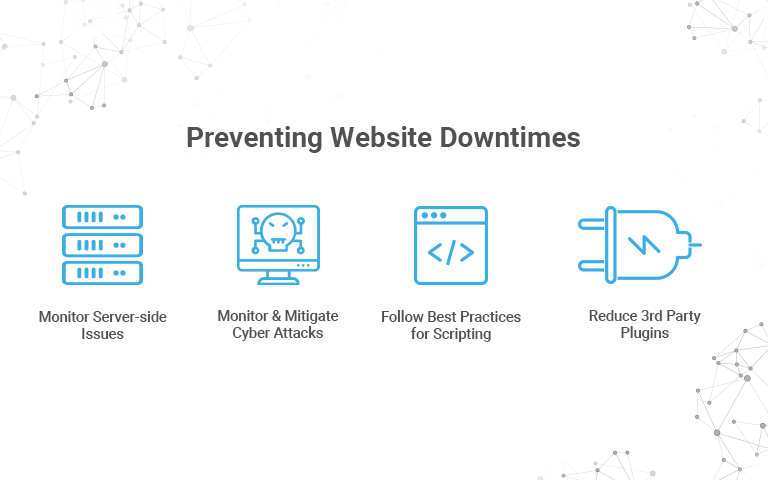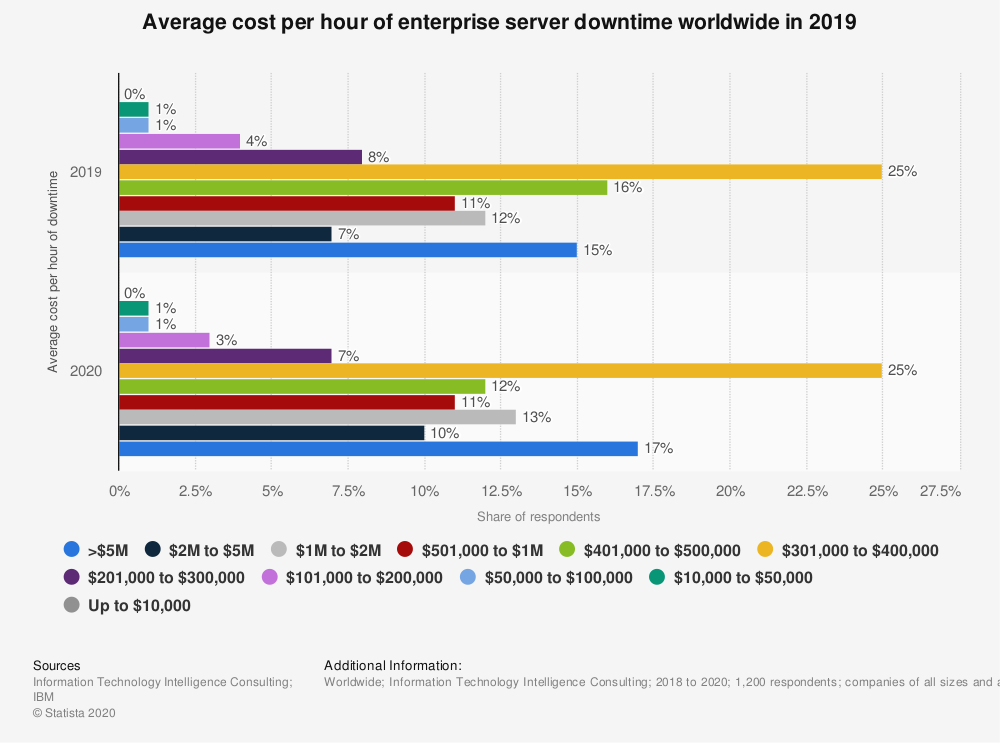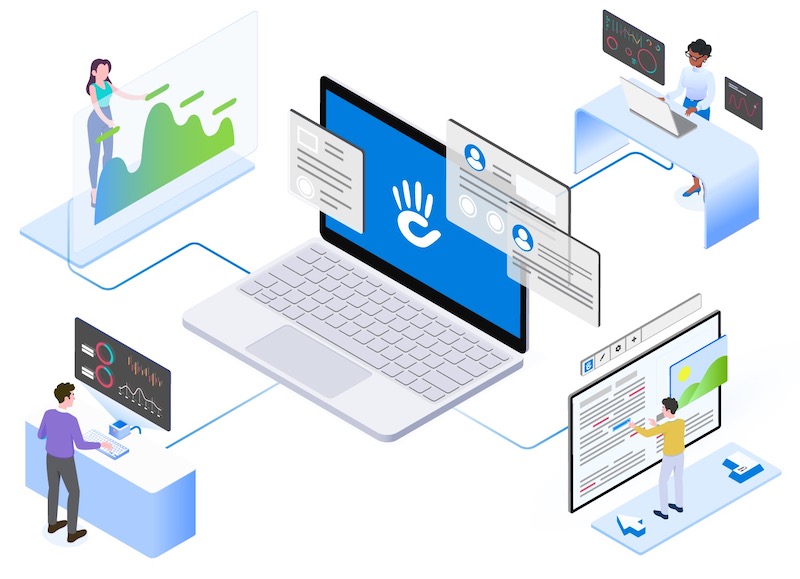In a highly competitive world, websites are vital for businesses to interact with their customers
However, they need to have more than just great content. They have to be available 24/7 from any location, like hosted voice services that provide support around the clock.
Ensuring your website functions without regular periods of site outage is imperative. Website downtime is more than just frustrating. It can alienate customers, tarnish your company’s reputation, and ultimately lead to lost revenue.
Therefore, it’s essential to understand the reasons behind website downtime and how to prevent it. In the article below, we’ll walk you through seven common reasons for site outage and troubleshooting steps you can take.
What is website downtime?
Website downtime is when a website is inaccessible or not functioning as it should for end-users. This could mean web pages failing to load or functions necessary for the website no longer working.
For example, if you were on a video streaming site and the controls stopped functioning, that could be defined as website downtime.
This definition can be subjective. Some businesses might consider inoperative controls as errors rather than downtime. Thus there are multiple ways for website downtime to occur.
Outages can happen for several reasons. Sometimes necessary hardware or software changes need to be made, like changing the theme. You can inform customers of scheduled outages such as this.
Unexpected outages also occur. Websites are composed of thousands of processes and pieces of hardware all working together. A single error can spell disaster. Regular, unplanned downtime can indicate issues that need resolving as quickly as possible.
Should I be worried about downtime?
When your website has unexpected and repeated outages, you should be concerned. Even if it's for a brief moment, this can have significant repercussions for your business, such as:
-
Leaving customers frustrated and dissatisfied with your service and brand
-
Damaging your business reputation
-
Dropping your search engine ranking
-
Losing potential and current customers
-
A drop in revenue

For example, imagine you’re selling a phone system for small business. People looking for phone systems for their business, or information on this, may visit your site. If it’s down, they’ll look elsewhere, causing you to lose potential customers and valuable revenue.
The same can happen with existing customers. If you have regular, unexpected website downtime, they may decide to switch to more reliable competitors. They may even write bad reviews and advocate against your services, significantly damaging your bottom line.
Downtime is a serious threat to online businesses. Your site is the face of your company and a crucial touchpoint in your customer’s journey. Ensuring it’s available 24/7 is essential. While customers will tolerate scheduled downtime, unexpected and frequent outages will lead them straight to your competitors.
Seven common reasons for website downtime
There are several reasons why website downtime occurs, but there are steps you can take to avoid them. This could be by minimizing the risk or fixing the problem at its core.
Here are seven common reasons for site outages and how you can troubleshoot them.
1. Human error/coding error
Humans are responsible for managing and maintaining web servers, making human error a primary reason for site outages.
Sabotage, accidents or poor quality work can all cause downtime. Coding errors are one area of concern. Websites function with thousands of lines of code and hardware, meaning even a misplaced comma can cause chaos.
There’s no way to prevent human errors, but there are ways of minimizing the risk to website uptime.
Start by weeding out errors. Test every piece of code thoroughly before it goes live to fix potential issues. Use AI solutions, like automated functional tests, and double-check written code.
Keep detailed records of changes and previous outages to identify errors. Ensure your processes and policies are regularly updated and hire professionals where possible to prevent this from happening.

2. Hardware problems
Websites are hosted on servers, which are physical products, and are thus prone to failure.
Servers are a key part of your website infrastructure. They’re where your website exists, and any disruption can lead to downtime.
However, you can’t predict when a server is going to fail or how. You can analyze servers for problems, but sudden issues are always possible. One reason for this is outdated hardware.
The pace of technological advancements means that companies invest in small upgrades over replacing entire servers to save on cost. Servers can be tedious to replace with long periods of downtime, but this is often necessary to deal with the modern web.
To prevent hardware failures from causing you downtime, upgrade your server when it’s struggling to keep up. Make sure you or your hosting providers have backup servers and equipment to keep your website running even if the dedicated server fails.
3. Poor website hosting
Third-party website hosting is a great, affordable alternative to offshore server work for people who know what they’re doing.
Competitive offerings might be enticing, but not all hosting providers are the same. While they call themselves reliable and offer a website uptime guarantee, cheaper web hosting plans often come at the expense of outdated servers and old IT infrastructure.
With a greater chance of hardware failure, downtime chances increase. While hosting providers may apologize and offer compensation or discounts for website downtime, this only applies to the cost of the hosting service. It doesn’t apply to the customers and sales that slip through your fingers during outages.
Look for reliable hosting providers with positive reviews. Some will come with plans for a specific CMS, so you’ll want to ensure you choose the best CMS and complimentary plan for you. Ask other companies which hosting plan they use to prevent detrimental damage and revenue loss for your business.
4. DNS issues
A domain name server (DNS) maps a domain name with an IP address, and it’s critical for website uptime. Slight issues with the DNS, such as a misspelled nameserver, can prevent a website from loading, even if the remaining infrastructure works perfectly.
If you’re having frequent DNS issues, you should look to upgrade your DNS hosting. Many domain registrars and web hosts include basic DNS hosting in their standard plan.
Upgrading to premium DNS hosting gives you advanced security features, faster servers, control over your DNS settings, and more. It will also afford extra protection against future downtime. Troubleshooting DNS issues requires a systematic approach to identify and resolve the root cause.
5. DDoS attacks
DDoS, or distributed denial of service, attacks happen when hackers flood a website or online service with huge traffic to make it unavailable. The increased traffic volume eats up the server bandwidth and resources, leading to overload.
However, you may not be the target. A single server can host multiple websites. When one website is targeted, the server crashes, and all the hosted sites experience downtime.
Thus, a simple solution is to use dedicated or cloud servers to avoid becoming an unwilling victim. Investing in quality hosting services and firewalls will likewise reduce risks to your business.
Not every web server crashes through malicious intent. A sudden influx of customers could cause website downtime if your web server doesn’t have the resources to handle it. Prevent this by running load tests regularly to check your server capability.
6. CMS issues
A content management system (CMS), such as Concrete CMS, makes building websites and publishing content simple. It gives you control and flexibility over your website and provides user-friendly interfaces.
CMSs use plugins, extensions, themes, third-party integrations, and other tools to provide extra features and functionalities. Unfortunately, newer versions of these integrations can cause compatibility issues.
For example, when you update a theme, the new version must be compatible with your CMS and server technologies. If it isn’t, a mundane change could cause severe unplanned downtime.
There are two ways to prevent this. Firstly, avoid nulled or old themes and plugins. Use reliable, recently updated third-party integrations with a CMS that can guarantee compatibility.
Secondly, back your website up regularly, especially before any upgrade. This can be done automatically through a backup tool. If your site does break, you’ll have a recent copy to hand to get you going again.

7. Mismanaged maintenance
Lapses in maintenance can lead to significant problems and website downtime. You could miss pivotal issues that lead to unexpected outages if you leave your website infrastructure unchecked.
To prevent this, ensure all hardware and software are regularly maintained. Hardware needs to be cleaned and replaced when it becomes outdated. Software, like CMSs and plugins, needs to be frequently updated.
This is for more than functionality. New updates provide security, and clean hardware prevents sudden failures.
It may sound simple, but don't put it off. Scheduling downtime to carry out maintenance can be frustrating if you need your website functioning 24/7, but it’s essential to prevent more costly problems. When you’re prioritizing tasks, put this at the top of your list.
Downtime is inevitable, prevention is simple
Your website is the face of your business and a crucial touchpoint in the buyer journey. You expect it to be there to greet your customers when they walk through the online door, but downtime issues can tarnish your reputation, alienate customers, and ultimately lose you revenue.
While some outage is normal, unexpected and regular bouts of it are not. No hosting provider can guarantee 100 percent uptime. Even sites such as Facebook, Instagram, and Twitter have rare bouts of website downtime.
However, understanding the common reasons for it means you can take preventative steps to avoid it happening again. Use monitoring tools and ensure you regularly back-up data. Consider using a secondary server or a different hosting provider for better uptime performance. Opt for a reliable CMS to boost your growth and efficiency.
Don’t wait until your website suffers an outage. Take proactive steps to stop this from occurring in the first place.
Bio:
Richard Conn - Senior Director, Demand Generation, 8x8
Richard Conn is the Senior Director for Demand Generation at 8x8, a leading communication platform with integrated VoIP server, contact center, voice, video, and chat functionality. Richard is an analytical & results-driven digital marketing leader with a track record of achieving major ROI improvements in fast-paced, competitive B2B environments. Here is his LinkedIn.
Learn More About Concrete
Interested in saving time and having a secure website? Learn what Concrete CMS can do for you.
